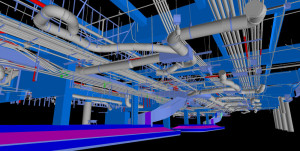 Surveying technology has been around for as long as man has been constructing edifice structures on the land. Only the methods used for land surveying have evolved through the ages to make the surveyors’ job more efficient and their data more reliable. Now is no different. Even as you read, hundreds of technologies are disrupting traditional surveying methods, ushering a new era of land surveying with improved data collection, organization, and interpretation.
Surveying technology has been around for as long as man has been constructing edifice structures on the land. Only the methods used for land surveying have evolved through the ages to make the surveyors’ job more efficient and their data more reliable. Now is no different. Even as you read, hundreds of technologies are disrupting traditional surveying methods, ushering a new era of land surveying with improved data collection, organization, and interpretation.
In this article, we look at the future of land surveying and the technologies that will impact the industry for years to come.
UAVs and Drones
Unmanned Aerial Vehicles (UAVs) such as drones might soon become industry standards for land surveying. A few years ago, drones equated to expensive business investment, but this in not the case today. More and more surveying firms are taking into account the immense benefits drones offer over traditional surveying methods, over terrestrial surveying, and manned aircraft.
Drones can cover large, difficult terrains in a much shorter time with much more accuracy. Surveyors can obtain data in remote, hazardous, and difficult-to-man terrains without risking their lives. Each image acquired bears high-accuracy and allows surveyors to extract exact and accurate data out of it, a feat that was otherwise unachievable with traditional methods.
In addition to this, data obtained from drones can be directly used with sophisticated tools and software to infer observations. Drones can integrate data to computer-aided design (CAD) to build real-time landscape models and other visual aids such as a 2D Orthomosiac map (top-down aerial view of the landscape), a 3D Orthomosiac Map (a bird’s-eye view of the landscape), and thermal maps (record heat levels in the area).
Some additional processing techniques such as real-time kinematics (RTK) and post-processing kinematic use satellite systems to improve data precision.
Cloud Storage of Data
As the scope of surveying increases and data becomes more accurate, the space required to store data also increases. While traditional data servers crash under the weight of such accurate and high-definition data, cloud storage has risen to the innovative occasion.
A cloud is a third-party data repository managed by said third-party. As opposed to traditional disks and servers, clouds enable companies to store high volumes of data without buying the infrastructure. They simply pay for the space they use. Surveying companies can do what they do best without having to worry about installing necessary data management software and updating it from time-to-time, thereby saving time and cost on IT enablement. Cloud-based software can also analyze powerful run-time data fast and give surveyors valuable data insights in a short time.
Data in the cloud is shareable, yet highly secured. All of the people involved in land surveying- surveyors, engineers, supervisors, managers, and clients can visualize data centrally. Such data-sharing is done in a controlled manner. Data owners have full rights to provide and revoke data access to specific parties without affecting the access to other involved parties.
All-in-all, cloud-based storage supports the modern-day surveying work model and saves time, energy, and the cost of managing and securing data while enabling seamless sharing with varying degrees of restrictions.
LiDAR
When we speak of the technologies involved in the future of land surveying, LiDAR deserves a notable mention. LiDAR stands for Light Detection and Ranging. It is a 3D laser scanning technique that uses ultraviolet, near-infrared, or visible light to measure distances between objects. It uses an in-built GPS receiver to detect nearby objects such as airplanes and helicopters. Then, using the laser and the scanner, it collects the light reflection properties and uses this data to create detailed data point clouds, which can then be used by surveyors to create 3D models of the terrain.
Different types of LiDAR are used across several different terrains. Bathymetric LiDAR is used for measuring elevations of seafloors and riverbeds from the air. Terrestrial LiDAR makes use of 3D-point clouds for mapping of terrains through topographical measurements. Airborne LiDAR uses 3D-point models to create digital elevation models (DEM).
Due to their increased flexibility, efficiency, and ability to provide faster insights using data point clouds, LiDAR is becoming an essential part of a surveyor’s toolkit and will continue to be utilized more frequently for surveying companies in the near future.
Mobile 3D Mapping
UAVs, LiDAR, cloud storage, and a variety of other technological adoptions have made it easy for surveyors and other stakeholders to create rapid mobile 3D mapping of data. Mobile 3D mapping refers to a geo-spatial data analysis using advanced imagery and measurement capture tools to visualize, record, measure, and study the surveying land insights irrespective of their location. It provides a quick, accurate, and comprehensive way to visualize data environments in some of the most impossible geographic terrains. This enables land surveyors to map those areas effectively which aren’t accessible to surveyors by traditional means. As a result, landscapes that would otherwise take weeks to survey can now be surveyed in days. Mobile 3D mapping has improved efficiency and productivity for surveyors.
Conclusion
Through years of surveying history, the purpose has always remained constant. Still, the tools we use for it, from ropes and pegs to drones, have significantly increased the speed and accuracy at which we map out land terrain details. Looking at the advancing technologies disrupting our everyday lives, it would suffice to say that for as long as technology is evolving, modern-day technology will continue to revolutionize the future of land surveying in unimaginably progressive ways.
If you have any specific questions regarding land surveying or a land project you would like feedback on, please feel free to reach out to us HERE today! We look forward to working with you.








